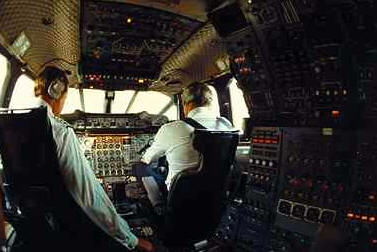 |
|
|
|
FAA to Double Capacity at High Altitudes January 19, 2005, WASHINGTON, DC — Tomorrow, January 20, at 4:01 a.m. EST, the nation’s high altitude airspace will get a much- needed boost in capacity that will save airlines more than an estimated $5 billion over the next decade in fuel costs. The Federal Aviation Administration (FAA) is doubling the airspace routes between 29,000 feet and 41,000 feet by spacing aircraft a thousand feet apart instead of 2,000. Increasing available high altitude routes gives pilots and air traffic controllers more choices so that aircraft can fly more direct routes at the most fuel-efficient altitudes, saving time and money for airlines and travelers alike. When you save fuel, you save money: it’s that simple and more efficient routes save the passenger time, said FAA Administrator Marion C. Blakey. We’re adding airspace routes, increasing capacity and maintaining the same high level of safety all at the same time. We’re switching over on-time and at just the right time. |
 |
|
|
The procedure, invisible to passengers, is called Reduced Vertical Separation Minimum (RVSM) and can add capacity safely because most aircraft are now equipped with advanced, more precise dual altimeter systems and autopilots. The horizontal separation of aircraft in high altitude airspace remains at five-plus miles. RVSM has been implemented safely over the last seven years in less complex airspace from Europe to Australia and over most of the North Atlantic and Pacific Oceans. In order for commercial airlines and other aviation users to take advantage of RVSM, the FAA must determine that aircraft are properly equipped and authorize operators to fly. The FAA will closely monitor high-altitude flying at its air traffic control enroute centers to ensure a safe transition to RVSM. In the summer of 2003, the FAA estimated that RVSM would save airlines and other aircraft operators $5.3 billion from now through 2016. The increase in the cost of jet fuel since then makes the estimated savings conservative. The FAA estimated the cost of implementing RVSM to be $869 million, mostly due to re-equipping older aircraft. In October 2003, the FAA issued its final rule on implementing RVSM. Last September, the FAA met with Canadian, Mexican, Caribbean and South American civil aviation authorities and agreed to proceed with implementation. As a result, all Western Hemisphere countries will convert to RVSM simultaneously on January 20. |
||
| ©AvStop Online Magazine To Advertise With Us Contact Us Return To News | ||